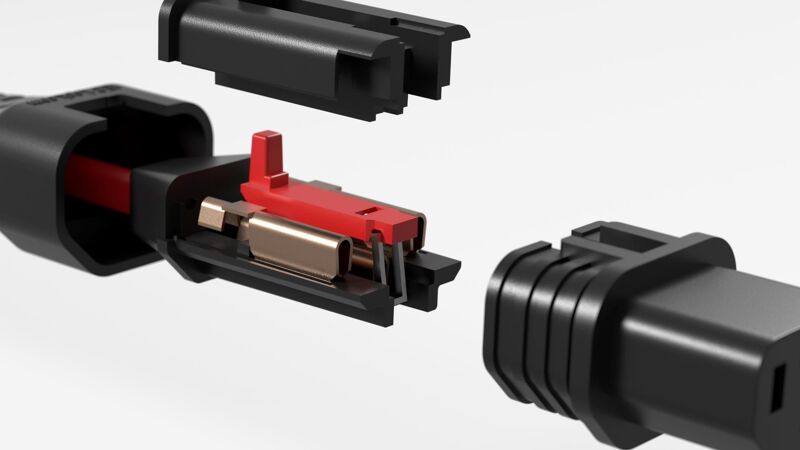
Evaluating the durability of International Electrotechnical Commission (IEC) connectors involves considering several factors that contribute to their longevity and reliability under various conditions. IEC connectors are widely used in electronic devices for connecting power, and their durability is crucial for the safety and efficiency of these devices. Here are key factors and methods for evaluating the durability of IEC connectors:
1. Material Quality
- Conductors and Contacts: The quality of the metal used in contacts (often brass, copper, or plated with gold or silver) significantly affects conductivity and resistance to corrosion.
- Insulation and Housing: The materials used for insulation and outer housing (such as PVC, rubber, or high-grade plastics) must be evaluated for their resistance to wear, environmental factors, and mechanical stress.
2. Mechanical Durability
- Insertion and Withdrawal Forces: Testing how much force is required to insert and withdraw the connector helps assess its ease of use and mechanical life. Standards often specify minimum and maximum forces to ensure compatibility and longevity.
- Mating Cycles: The number of mating cycles a connector can withstand without significant degradation in performance indicates its mechanical durability. IEC connectors are typically rated for a minimum number of cycles.
3. Electrical Performance
- Contact Resistance: Low and stable contact resistance over the life of the connector is crucial for maintaining electrical efficiency and preventing overheating.
- Insulation Resistance and Dielectric Withstanding Voltage: High insulation resistance and the ability to withstand specified voltages without breakdown are critical for safety and reliability.
4. Environmental Resistance
- Temperature Ranges: Connectors should maintain performance across the specified temperature range, which includes both operating temperatures and storage conditions.
- Corrosion Resistance: Resistance to corrosion, particularly for connectors used in harsh or outdoor environments, affects longevity.
- Moisture and Dust Protection: The ingress protection (IP) rating indicates how well the connector resists entry of moisture and particulates, with higher ratings signifying better protection.
5. Standards and Certifications
- Compliance with IEC Standards: Adherence to specific IEC standards (such as IEC 60320 for appliance couplers) guarantees a level of performance and durability.
- Certifications: UL (Underwriters Laboratories), CE (Conformité Européenne), and other certifications indicate compliance with safety and quality standards.
6. User Feedback and Field Performance
- Long-term Use: Reviews and feedback from long-term use in the field provide invaluable insights into the connector’s durability under real-world conditions.
- Warranty and Support: The length and terms of the warranty can also reflect the manufacturer’s confidence in their product’s durability.
Evaluation Methods
To thoroughly evaluate the durability of IEC connectors, a combination of laboratory testing, compliance with international standards, and real-world performance feedback is used. Laboratory tests simulate mechanical wear, electrical load, environmental conditions, and material degradation over time. Meanwhile, compliance with standards ensures a baseline of safety and performance, and real-world feedback offers practical insights into the connector’s lifespan and reliability.
For manufacturers and users alike, understanding these aspects of IEC connectors can aid in selecting the right connectors for their applications, ensuring safety, efficiency, and longevity.


